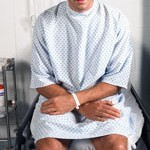In 1997 the Food and Drug Administration (FDA) approved a controversial new drug called Propecia; a wonder drug that was supposed to solve hair loss issues in men. It was hailed by the hair loss replacement industry as one of the greatest advances in that field. At the same time there were some critics of the drug, including well-known hair loss expert Dr. L. Lee Bosley, who voiced public concern over the potential severe side effects of Propecia.
 One of those side effects is Peyronie’s disease; a condition in which scar tissue forms in the penis and causes significant curvature. In many cases the curvature is accompanied by moderate to severe pain. Thankfully, there may be a safe and effective solution that proves successful for some former Propecia users who have since ceased taking the drug. That solution is a penis extender device.
One of those side effects is Peyronie’s disease; a condition in which scar tissue forms in the penis and causes significant curvature. In many cases the curvature is accompanied by moderate to severe pain. Thankfully, there may be a safe and effective solution that proves successful for some former Propecia users who have since ceased taking the drug. That solution is a penis extender device.
Extenders versus Suction
In recommending a penis extender device as a possible solution for Peyronie’s disease it’s important to note that we are referring to a traction device (extender) rather than a suction device. Suction devices, like the penis pump, do have their value for certain purposes. But they likely won’t help a Peyronie’s victim much due to a design which is intended only to stimulate blood flow through the engorged member. A traction device, on the other hand, works completely different.
Traction is the process of holding the penis in place while applying a gentle but consistent pulling of the tissue. One of the best penis extender devices, known as the Quick Extender Pro, has proven effective in some men as a treatment for Peyronie’s disease. Those who choose to use it for this purpose could also add length and girth at the same time if they wanted to.
How It Works
As a treatment for Peyronie’s disease a penis enlargement device like the Quick Extender Pro holds the tissue firmly in place and thus encourages the body’s self-healing mechanisms to deal with the scar tissue and straighten out. It works on the same principle as the oral appliances orthodontists use to straighten out a patient’s teeth. By applying a consistent amount of pressure in the opposite direction of the curvature the device gently but effectively encourages the body to self-correct.
The self-correction mechanisms involve the cell regeneration that is part of normal body function. In other words, the cells in our bodies are constantly dying and being replaced with new ones. Those new cells, which then go on to form new tissue, can be manipulated in ways that cause them to grow in specific places and with specific characteristics. Surgeons have been utilizing this principle in all types of corrective surgeries for generations. Using a penis extender device to treat Peyronie’s disease is no different. By holding the penis steady and firm, and applying gentle pressure, it encourages new cell tissue to grow in such a way as to correct curvature.
Safe and Comfortable
What’s most important about a device like the Quick Extender Pro is the fact that it is proven safe. Unlike the oral medications that got the Propecia victims in trouble to begin with, there are no adverse side effects from using such a device as long as instructions are followed and recommendations are never exceeded. The principle of traction has been used for centuries not only for penis enlargement but for increasing the size of other body parts as well. It is proven technology that is safe to use.
You’ll also find that such a treatment is comfortable if you use a quality, double-strap system like the one offered by the Quick Extender Pro. You will feel the gentle pulling motion provided by the device to some degree, but many men report that after a few days they completely forget that they are wearing it. By the time they get to end of their treatment the device has become such a natural part of their routine that it’s barely noticeable.
Talk to Your Doctor If You Have Peyronie’s
 If you’re suffering from Peyronie’s disease it’s a good idea to talk your Doctor. about the possibility of using a penis extender device to correct your condition. He may suggest other treatment options as well, which is fine, but be sure to get all the information before you make a decision. You should be especially careful when considering the idea of surgery.
If you’re suffering from Peyronie’s disease it’s a good idea to talk your Doctor. about the possibility of using a penis extender device to correct your condition. He may suggest other treatment options as well, which is fine, but be sure to get all the information before you make a decision. You should be especially careful when considering the idea of surgery.
Surgical procedures for correcting Peyronie’s disease are complex and require urologists with a special skill set. According to the Mayo Clinic surgical procedures are generally avoided within the first 12 to 18 months of treatment because of the difficulty they present. Some urologists may prescribe oral medications or topical creams though very few of these solutions have proven effective.
In the meantime, patients might also consider joining a Peyronie’s disease support group in their local area. Such groups give sufferers the opportunity to interact with others for discussion, up-to-date information, and relationship building. For a list of Peyronie’s support groups in your area just run the standard Internet search using your favorite search engine.






